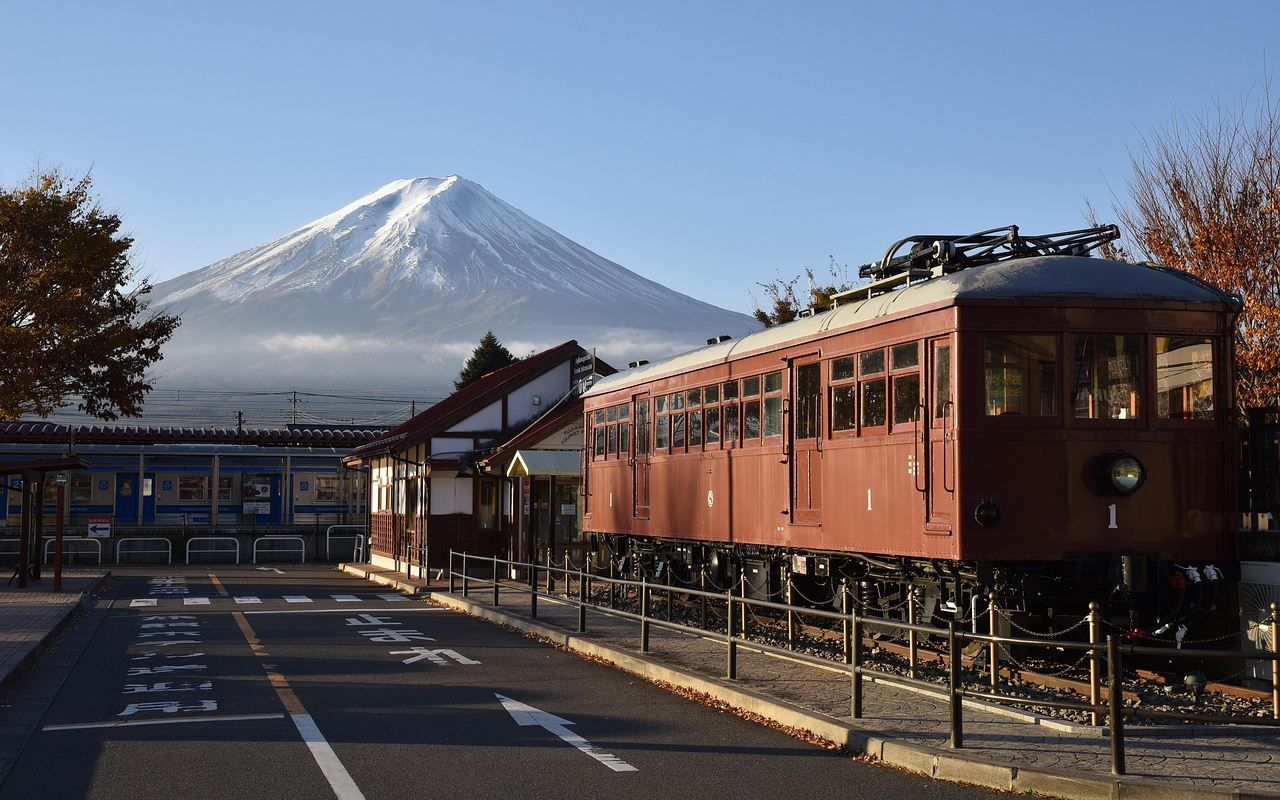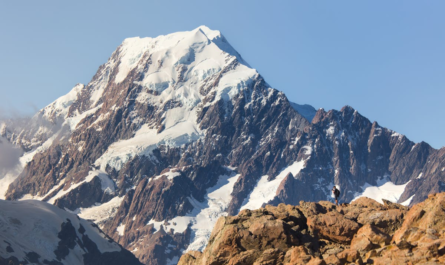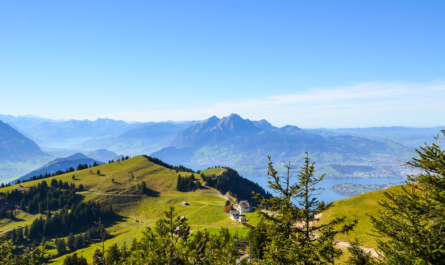Mount Rigi, often known as one of Switzerland’s most stunning alpine destinations. Located in the heart of the country, Mount Rigi offers breathtaking panoramic views, serene landscapes, and diverse activities for tourists and locals alike. Whether you’re a nature lover, a hiking enthusiast, or simply looking for a relaxing getaway, visiting Mount Rigi is a must.
However, reaching this majestic peak requires careful planning, as multiple transportation options are available, each offering a unique experience. In this guide, we’ll explore the best ways to travel to and around Mount Rigi, including trains, cars, and boats, to help you plan a seamless and enjoyable trip.
1. Traveling to Mount Rigi by Train
Why Choose the Train?
Switzerland is known for its efficient and scenic railway system, making the train one of the best ways to reach Mount Rigi. Traveling by train allows you to sit back, relax, and enjoy breathtaking views of lakes, mountains, and charming Swiss villages along the way.
How to Travel to Mount Rigi: By Train or Car
Train Routes to Mount Rigi
There are several train routes to reach Mount Rigi, depending on your starting location. If you are traveling from Zurich, take a train from Zurich Hauptbahnhof (main station) to Arth-Goldau, which takes approximately 40–50 minutes. From Arth-Goldau, board the Rigi Bahn cogwheel train to Rigi Kulm, a scenic journey that lasts around 45 minutes.
For travelers coming from Lucerne, you have two options. You can take a boat from Lucerne to Vitznau, which takes about one hour, and then board the Vitznau-Rigi Bahn, the first mountain railway in Europe, which takes around 30 minutes to reach Rigi Kulm. Alternatively, you can take a train from Lucerne to Arth-Goldau, a 30-minute ride, and then continue on the Rigi Bahn cogwheel train to the summit.
If you are starting from Interlaken, take a train from Interlaken to Lucerne, which takes approximately two hours. From Lucerne, you can either take a boat to Vitznau or a train to Arth-Goldau, and then proceed with the mountain railway as mentioned above.
One of the biggest advantages of traveling by train is the breathtaking scenery you experience along the way, including panoramic views of Lake Lucerne and the Swiss Alps. Swiss trains are known for their punctuality, cleanliness, and comfort, making them a hassle-free travel option. Additionally, choosing a train over a car is an eco-friendly choice, as trains produce fewer carbon emissions.
Traveling to Mount Rigi by Car
Although you cannot drive directly to the summit of Mount Rigi, you can drive to one of the base stations—Arth-Goldau or Vitznau—where you can park your car and continue your journey via the mountain railway.
If you are driving from Zurich, take the A4 highway toward Arth-Goldau, which takes approximately 50 minutes, or drive to Vitznau via Küssnacht, a route that takes around one hour. Travelers from Lucerne can reach Vitznau in about 40 minutes via Küssnacht or drive to Arth-Goldau in approximately 35 minutes via the A4 highway.
There are convenient parking options at both locations. In Arth-Goldau, a designated parking lot is available near the Rigi Bahn station, while in Vitznau, you can find paid parking near the boat terminal and railway station.
Driving offers several advantages, such as flexibility to explore nearby areas and added convenience for families or groups carrying luggage. However, it also comes with drawbacks, including expensive parking fees and the fact that you still need to take a train or cable car to reach the summit.
3. Traveling to Mount Rigi by Boat
Why Take the Boat?
A boat ride on Lake Lucerne is an unforgettable experience, offering breathtaking views of the Swiss Alps. Combining a boat trip with a mountain railway ride is one of the most scenic ways to reach Mount Rigi.
Boat Routes to Mount Rigi
From Lucerne to Vitznau:
- Boats operated by Lake Lucerne Navigation Company (SGV) depart regularly from Lucerne’s harbor.
- The boat ride takes approximately 1 hour.
- From Vitznau, take the Vitznau-Rigi Bahn to Rigi Kulm.
From Weggis to Rigi Kaltbad:
- Take a boat from Lucerne to Weggis (40 minutes).
- From Weggis, board the Rigi Kaltbad aerial cable car to reach Rigi Kaltbad station.
Advantages of Traveling by Boat
- Unparalleled Scenic Views: The best way to experience Lake Lucerne and the surrounding mountains.
- Relaxing & Unique: Enjoy a slow, peaceful journey across crystal-clear waters.
- Seamless Connection: Well-timed connections with Rigi Bahn.
4. Best Transportation Option Based on Your Preferences
Choosing the best way to get to Mount Rigi depends on your priorities. Here’s a quick guide to help you decide:
5. Tips for an Enjoyable Journey
Tips for a Smooth Travel Experience in Switzerland
1. Buy Swiss Travel Pass
The Swiss Travel Pass is a cost-effective option for tourists, providing unlimited travel on trains, buses, and boats across Switzerland. It also includes free or discounted access to various museums, mountain excursions, and scenic routes such as the GoldenPass Line, Glacier Express, and Bernina Express. Additionally, it covers some cable cars and cogwheel trains, making it a convenient choice for exploring the Swiss Alps.
2. Check Weather Conditions
Switzerland’s weather can be unpredictable, especially in the mountains. Before planning a day trip to locations like Jungfraujoch, Mount Titlis, or Schilthorn, check the forecast for visibility, temperature, and wind conditions. Poor weather can impact your ability to enjoy scenic views, and certain routes may be affected by heavy snowfall or fog. Websites like MeteoSwiss or local weather apps provide real-time updates.
3. Book Tickets in Advance
Popular scenic train routes, such as the Glacier Express, Bernina Express, and Gornergrat Railway, can sell out quickly, especially during peak tourist seasons (summer and winter). Booking tickets in advance ensures you get a seat and can avoid long waiting times. Some routes also offer discounts for early reservations.
4. Pack Essentials
- Clothing: Even in summer, mountain areas can be cold, so bring a light jacket, scarf, and gloves if traveling to high-altitude locations. Layered clothing is best for adapting to temperature changes.
- Footwear: Comfortable, non-slip shoes are essential for walking on uneven or icy surfaces.
- Sunglasses & Sunscreen: UV rays are stronger at high altitudes, so protect your eyes and skin.
- Snacks & Water: While some mountain destinations have restaurants, it’s good to carry water and snacks, especially for long train journeys.
- Power Bank & Camera: You’ll want to capture the stunning landscapes, and a power bank ensures your devices stay charged.
Mount Rigi is one of Switzerland’s most accessible and breathtaking destinations. Whether you prefer the charm of a train ride, the flexibility of driving, or the serene beauty of a boat journey, each mode of transportation offers a unique way to experience this iconic mountain. By carefully planning your trip and selecting the best transport option for your needs, you’re sure to have an unforgettable adventure on the “Queen of the Mountains.”
Mount Rigi, often called the “Queen of the Mountains,” is one of Switzerland’s most stunning alpine destinations. Located in the heart of the country, Mount Rigi offers breathtaking panoramic views, serene landscapes, and diverse activities for tourists and locals alike. Whether you’re a nature lover, a hiking enthusiast, or simply looking for a relaxing getaway, visiting Mount Rigi is a must.
However, reaching this majestic peak requires careful planning, as multiple transportation options are available, each offering a unique experience. In this guide, we’ll explore the best ways to travel to and around Mount Rigi, including trains, cars, and boats, to help you plan a seamless and enjoyable trip.
1. Traveling to Mount Rigi by Train
Why Choose the Train?
Switzerland is known for its efficient and scenic railway system, making the train one of the best ways to reach Mount Rigi. Traveling by train allows you to sit back, relax, and enjoy breathtaking views of lakes, mountains, and charming Swiss villages along the way.
How to Travel to Mount Rigi: By Train or Car
Train Routes to Mount Rigi
There are several train routes to reach Mount Rigi, depending on your starting location. If you are traveling from Zurich, take a train from Zurich Hauptbahnhof (main station) to Arth-Goldau, which takes approximately 40–50 minutes. From Arth-Goldau, board the Rigi Bahn cogwheel train to Rigi Kulm, a scenic journey that lasts around 45 minutes.
For travelers coming from Lucerne, you have two options. You can take a boat from Lucerne to Vitznau, which takes about one hour, and then board the Vitznau-Rigi Bahn, the first mountain railway in Europe, which takes around 30 minutes to reach Rigi Kulm. Alternatively, you can take a train from Lucerne to Arth-Goldau, a 30-minute ride, and then continue on the Rigi Bahn cogwheel train to the summit.
If you are starting from Interlaken, take a train from Interlaken to Lucerne, which takes approximately two hours. From Lucerne, you can either take a boat to Vitznau or a train to Arth-Goldau, and then proceed with the mountain railway as mentioned above.
One of the biggest advantages of traveling by train is the breathtaking scenery you experience along the way, including panoramic views of Lake Lucerne and the Swiss Alps. Swiss trains are known for their punctuality, cleanliness, and comfort, making them a hassle-free travel option. Additionally, choosing a train over a car is an eco-friendly choice, as trains produce fewer carbon emissions.
Traveling to Mount Rigi by Car
Although you cannot drive directly to the summit of Mount Rigi, you can drive to one of the base stations—Arth-Goldau or Vitznau—where you can park your car and continue your journey via the mountain railway.
If you are driving from Zurich, take the A4 highway toward Arth-Goldau, which takes approximately 50 minutes, or drive to Vitznau via Küssnacht, a route that takes around one hour. Travelers from Lucerne can reach Vitznau in about 40 minutes via Küssnacht or drive to Arth-Goldau in approximately 35 minutes via the A4 highway.
There are convenient parking options at both locations. In Arth-Goldau, a designated parking lot is available near the Rigi Bahn station, while in Vitznau, you can find paid parking near the boat terminal and railway station.
Driving offers several advantages, such as flexibility to explore nearby areas and added convenience for families or groups carrying luggage. However, it also comes with drawbacks, including expensive parking fees and the fact that you still need to take a train or cable car to reach the summit.
3. Traveling to Mount Rigi by Boat
Why Take the Boat?
A boat ride on Lake Lucerne is an unforgettable experience, offering breathtaking views of the Swiss Alps. Combining a boat trip with a mountain railway ride is one of the most scenic ways to reach Mount Rigi.
Boat Routes to Mount Rigi
From Lucerne to Vitznau:
- Boats operated by Lake Lucerne Navigation Company (SGV) depart regularly from Lucerne’s harbor.
- The boat ride takes approximately 1 hour.
- From Vitznau, take the Vitznau-Rigi Bahn to Rigi Kulm.
From Weggis to Rigi Kaltbad:
- Take a boat from Lucerne to Weggis (40 minutes).
- From Weggis, board the Rigi Kaltbad aerial cable car to reach Rigi Kaltbad station.
Advantages of Traveling by Boat
- Unparalleled Scenic Views: The best way to experience Lake Lucerne and the surrounding mountains.
- Relaxing & Unique: Enjoy a slow, peaceful journey across crystal-clear waters.
- Seamless Connection: Well-timed connections with Rigi Bahn.
4. Best Transportation Option Based on Your Preferences
Choosing the best way to get to Mount Rigi depends on your priorities. Here’s a quick guide to help you decide:
5. Tips for an Enjoyable Journey
Tips for a Smooth Travel Experience in Switzerland
1. Buy Swiss Travel Pass
The Swiss Travel Pass is a cost-effective option for tourists, providing unlimited travel on trains, buses, and boats across Switzerland. It also includes free or discounted access to various museums, mountain excursions, and scenic routes such as the GoldenPass Line, Glacier Express, and Bernina Express. Additionally, it covers some cable cars and cogwheel trains, making it a convenient choice for exploring the Swiss Alps.
2. Check Weather Conditions
Switzerland’s weather can be unpredictable, especially in the mountains. Before planning a day trip to locations like Jungfraujoch, Mount Titlis, or Schilthorn, check the forecast for visibility, temperature, and wind conditions. Poor weather can impact your ability to enjoy scenic views, and certain routes may be affected by heavy snowfall or fog. Websites like MeteoSwiss or local weather apps provide real-time updates.
3. Book Tickets in Advance
Popular scenic train routes, such as the Glacier Express, Bernina Express, and Gornergrat Railway, can sell out quickly, especially during peak tourist seasons (summer and winter). Booking tickets in advance ensures you get a seat and can avoid long waiting times. Some routes also offer discounts for early reservations.
4. Pack Essentials
- Clothing: Even in summer, mountain areas can be cold, so bring a light jacket, scarf, and gloves if traveling to high-altitude locations. Layered clothing is best for adapting to temperature changes.
- Footwear: Comfortable, non-slip shoes are essential for walking on uneven or icy surfaces.
- Sunglasses & Sunscreen: UV rays are stronger at high altitudes, so protect your eyes and skin.
- Snacks & Water: While some mountain destinations have restaurants, it’s good to carry water and snacks, especially for long train journeys.
- Power Bank & Camera: You’ll want to capture the stunning landscapes, and a power bank ensures your devices stay charged.
Mount Rigi is one of Switzerland’s most accessible and breathtaking destinations. Whether you prefer the charm of a train ride, the flexibility of driving, or the serene beauty of a boat journey, each mode of transportation offers a unique way to experience this iconic mountain. By carefully planning your trip and selecting the best transport option for your needs, you’re sure to have an unforgettable adventure on the “Queen of the Mountains.”



